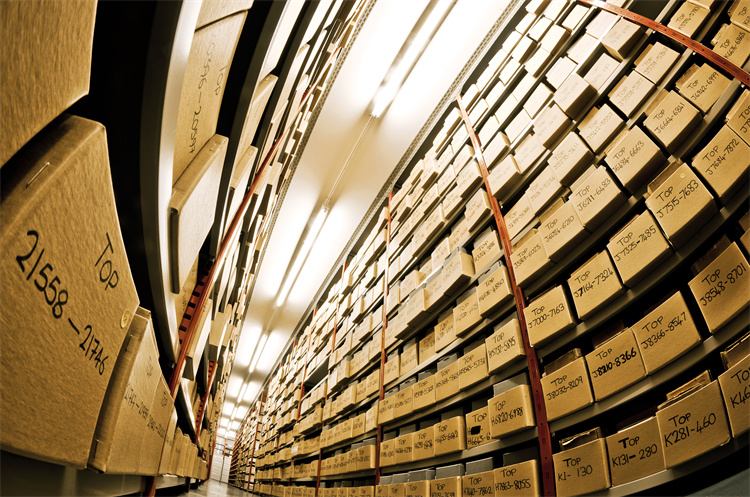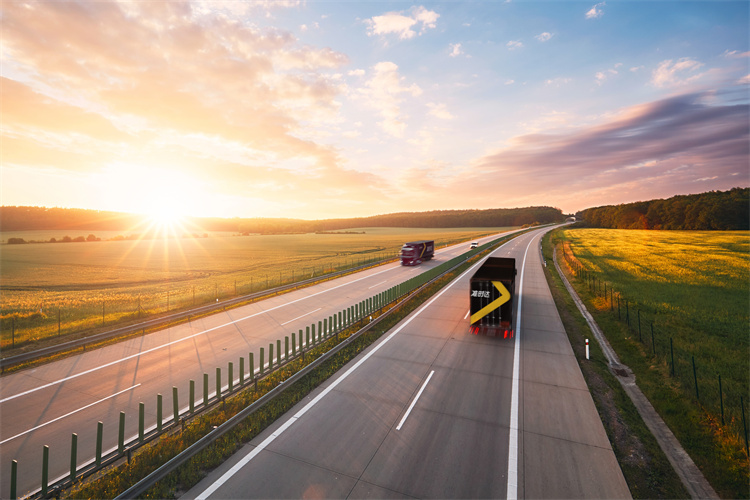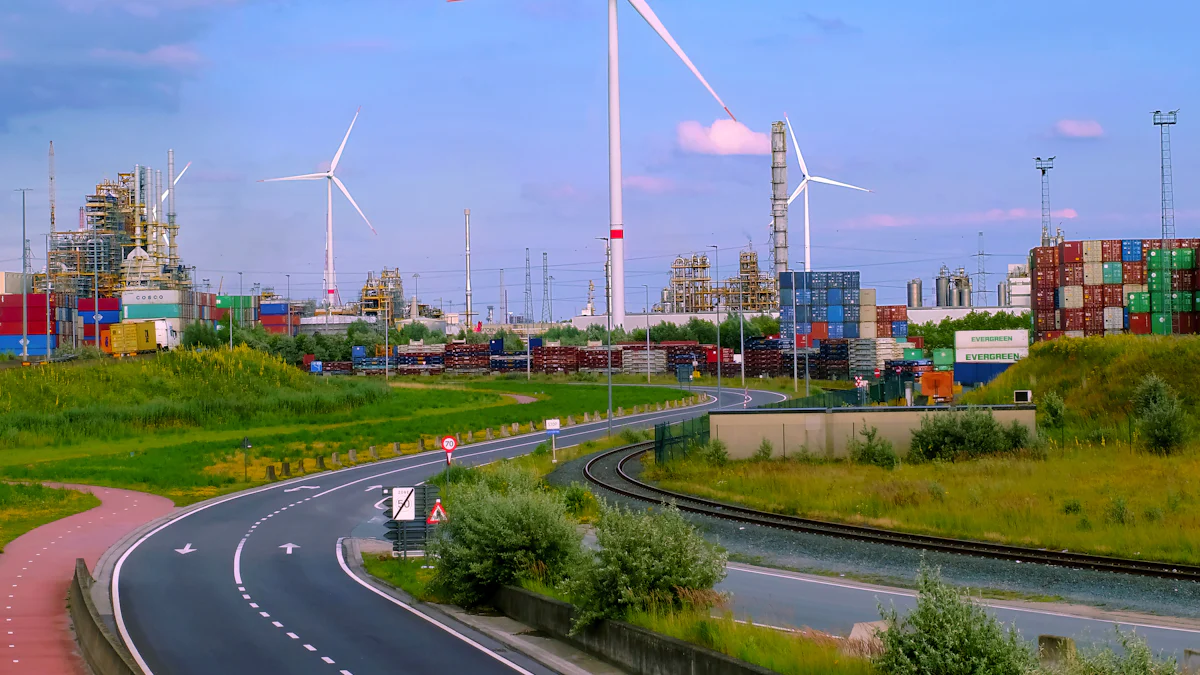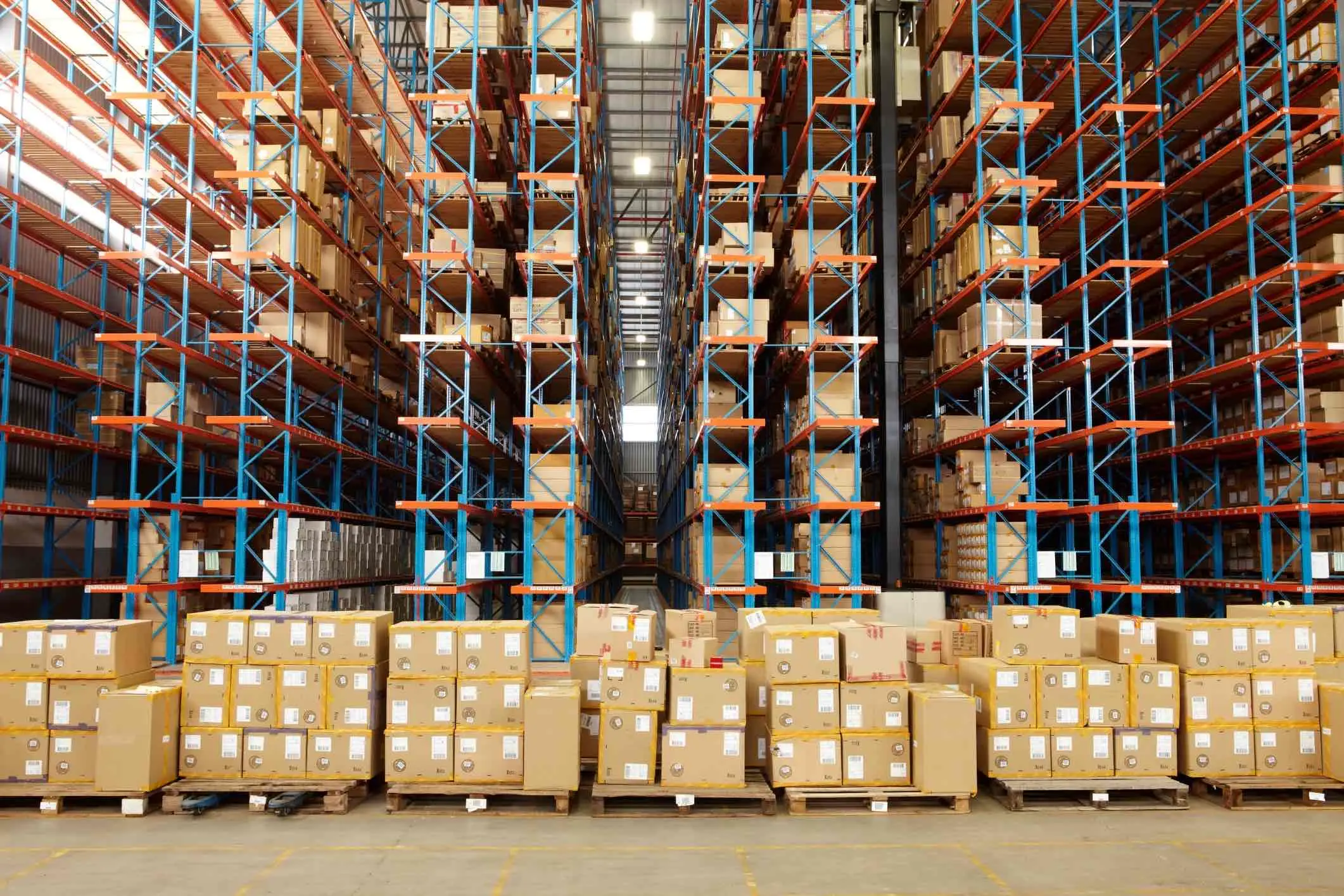How the Logistics Industry is Powering the Green Revolution

The logistics industry plays a critical role in the energy transition. It contributes significantly to greenhouse gas emissions, making decarbonization essential. You see companies adopting renewable energy to reduce economic risks tied to fossil fuels. Stricter regulations also push logistics firms to embrace sustainable practices. Electrifying fleets and using renewable energy in facilities are transforming operations.
Key Takeaways
The logistics industry adds a lot to carbon pollution. Switching to clean energy and electric vehicles can help reduce this.
Using eco-friendly methods, like better route planning and reusing materials, saves money and improves work efficiency.
Tools like AI, IoT, and blockchain are changing logistics by saving energy and making supply chains more open and clear.
The Environmental Impact of the Logistics Industry

Carbon Emissions and the Need for Decarbonization
The logistics sector contributes significantly to global carbon emissions. Transportation and logistics activities, including freight movement and last-mile delivery, rely heavily on fossil fuels. This reliance increases greenhouse gas emissions, which harm the environment. Decarbonization efforts are essential to address this issue. Logistics companies are now adopting renewable energy logistics solutions to reduce their carbon footprint. By transitioning to electric vehicles and optimizing delivery routes, they aim to cut emissions. These changes not only benefit the environment but also align with stricter regulations on energy transportation.
Resource Consumption in Warehousing and Transportation
Warehousing and transportation consume vast amounts of energy and resources. Warehouses often depend on non-renewable energy for lighting, heating, and cooling. Transportation, on the other hand, uses significant fuel resources. This high consumption impacts sustainability goals. Logistics companies are integrating renewable energy sources like solar panels and wind turbines into their facilities. These steps enhance energy efficiency and reduce dependency on fossil fuels. Additionally, sustainable practices such as electrification of transport and waste reduction are gaining traction in energy logistics.
The Call for Sustainable Energy Logistics Practices
Sustainability in energy logistics requires a shift toward environmentally responsible practices. Logistics companies are focusing on energy-efficient transportation methods and renewable energy integration. Route optimization reduces fuel consumption, while sustainable packaging minimizes waste. These practices address the environmental impacts of energy transportation and warehousing. By adopting renewable energy logistics, you can contribute to a greener future. The logistics sector plays a vital role in this transition, making sustainability a core focus of its operations.
Strategies for a Sustainable Energy Transition in Logistics
Electrification of Logistics Fleets
Fleet electrification is transforming energy logistics by reducing carbon emissions and improving efficiency. Transportation accounts for about 8% of global CO2 emissions, with road freight contributing nearly 5%. Without action, these emissions could rise to 10% by 2050. Electric vehicles (EVs) offer a solution by producing no exhaust emissions. When powered by renewable energy, their carbon impact becomes negligible. Companies adopting electric fleets also benefit from cost savings as carbon pricing expands. Early adopters gain a competitive edge by avoiding carbon taxes and accessing incentives for clean technologies.
However, challenges remain. Electric vehicles face range and payload limitations, especially for heavy-duty transport. High upfront costs for EVs and charging infrastructure can deter smaller companies. Additionally, grid capacity must expand to meet the increased demand for electricity. Despite these hurdles, fleet electrification remains a critical step in decarbonization and renewable energy logistics.
Renewable Energy Integration in Warehousing and Operations
Warehousing operations consume significant energy, making renewable energy integration essential. Solar panels and wind turbines can power facilities, reducing reliance on fossil fuels. Energy-efficient lighting systems, such as LEDs, further lower electricity consumption. Electric vehicles for delivery complement these efforts, creating a sustainable energy logistics ecosystem.
Fulfillment Hub USA demonstrates the benefits of renewable energy integration. Their approach includes energy-efficient technologies and recycling programs, reducing environmental impact while improving operational efficiency. By adopting similar strategies, you can align your logistics operations with sustainability goals and reduce costs.
Circular Supply Chains and Sustainable Practices
Circular supply chains promote sustainability by reusing materials and minimizing waste. Companies like H&M collect used clothing for recycling, aiming for 100% sustainable materials by 2030. Plastic pallet pooling offers another example, where businesses rent pallets that can be recycled at the end of their lifecycle. This closed-loop system reduces waste and supports renewable energy logistics.
Adopting circular supply chains also lowers costs. By reusing materials and extending product lifespans, you reduce procurement expenses and waste management costs. These practices not only benefit the environment but also enhance supply chain efficiency, making them a cornerstone of sustainable energy logistics.
Technologies Driving Renewable Energy Logistics

AI and Data Analytics for Energy Efficiency
Artificial intelligence (AI) and data analytics are transforming energy logistics by improving efficiency and reducing environmental impact. AI optimizes delivery routes, cutting fuel consumption and emissions. It also manages inventory levels, minimizing excess storage needs and lowering energy usage in warehouses. By improving warehouse layouts, AI reduces energy consumption during picking and packing processes.
You can also use AI to adjust lighting based on occupancy and natural light, significantly lowering electricity usage. HVAC systems benefit from AI by maintaining energy efficiency under real-time conditions. Additionally, AI ensures renewable energy systems operate efficiently, reducing reliance on non-renewable sources. Data analytics complements AI by identifying inefficiencies and optimizing routes, helping companies implement sustainable practices that lower energy consumption and carbon emissions.
IoT and Smart Sensors in Logistics Operations
The Internet of Things (IoT) and smart sensors play a vital role in renewable energy logistics. These technologies enable real-time tracking of goods in transit, ensuring transparency and efficiency. IoT sensors monitor energy consumption and emissions, helping you identify areas for improvement. Advanced predictive analytics optimize inventory levels, reducing waste and energy usage.
You can also use RFID tags and geo-position trackers to improve worker efficiency and track object locations. For temperature-sensitive goods, IoT sensors ensure compliance through cold chain monitoring. Fleet management benefits from real-time GPS tracking, providing insights into vehicle performance and fuel consumption. These advancements make IoT indispensable for sustainable energy logistics.
Blockchain for Transparent and Sustainable Supply Chains
Blockchain technology enhances transparency and trust in the supply chain industry. It provides a tamper-evident ledger, ensuring the authenticity of information. By recording and validating transactions across participants, blockchain fosters trust among stakeholders. All parties access a single source of truth, improving transparency during upstream transactions.
In renewable energy logistics, blockchain ensures traceability and promotes environmentally friendly practices. It records every step of the supply chain, from production to delivery, enabling you to verify sustainability claims. While challenges like system compatibility and workforce knowledge exist, blockchain remains a powerful tool for creating transparent and sustainable supply chains.
JUSDA’s Role in the Energy Transition
Leveraging the China-Europe Express Rail for Decarbonization
You can significantly reduce carbon emissions by using JUSDA’s China-Europe Express Rail. This service offers a sustainable alternative to traditional freight methods. It delivers goods faster than sea freight and costs less than air freight. The rail network connects China and Europe, enabling efficient transportation of goods like electronics, clothing, and medical supplies. By choosing this rail service, you support decarbonization efforts in logistics. The service minimizes reliance on fossil fuels, making it an eco-friendly option for businesses. Its intermodal solutions also connect Southeast Asia to Europe, further enhancing its environmental benefits.
JusLink Intelligent Supply Chain for Renewable Energy Logistics
JUSDA’s JusLink platform revolutionizes renewable energy logistics. It integrates IoT, cloud computing, and big data to optimize supply chain operations. You gain real-time visibility into inventory, transportation, and warehousing. This transparency helps you make informed decisions and reduce energy consumption. JusLink also supports renewable energy integration by streamlining operations and improving efficiency. For example, it enables dynamic inventory management, which reduces waste and energy use. By adopting JusLink, you align your logistics practices with sustainability goals while enhancing operational efficiency.
Industry-Specific Solutions for New Energy and Beyond
JUSDA tailors its solutions to meet the unique needs of industries like new energy, automotive, and medical health. For the new energy sector, JUSDA provides specialized logistics services that prioritize renewable energy integration. These solutions include efficient transportation of solar panels, wind turbines, and batteries. You can also benefit from JUSDA’s expertise in managing complex supply chains. Their industry-specific approach ensures that your logistics operations remain sustainable and cost-effective. By leveraging these solutions, you contribute to a greener future while optimizing your supply chain.
Challenges in Achieving Green Logistics
Infrastructure Gaps for Renewable Energy Integration
Renewable energy logistics faces unique challenges due to infrastructure gaps. Transporting large components like wind turbine blades and solar panels requires specialized facilities and routes. In developing regions, inadequate infrastructure often causes delays and increases costs. These challenges hinder the efficiency of energy transportation systems.
You also encounter regulatory hurdles when managing renewable energy logistics. Navigating fragmented global frameworks, such as the Corporate Sustainability Due Diligence Directive (CSDDD), adds complexity. Non-compliance can lead to reputational damage and financial penalties. Addressing these gaps requires investment in specialized infrastructure and streamlined regulatory processes.
High Costs of Transitioning to Sustainable Technologies
Adopting sustainable technologies in logistics involves significant financial barriers. Upfront investments in electric vehicles, renewable energy infrastructure, and sustainable packaging demand substantial capital. For smaller businesses, these costs can seem prohibitive.
Sustainability initiatives often require large-scale investments in technology and infrastructure.
Failing to decarbonize transport emissions can result in higher long-term costs due to inefficiencies and regulatory penalties.
Public and private funding initiatives, along with government incentives, can help mitigate these financial challenges.
Balancing short-term expenses with long-term benefits is crucial. Exploring innovative financing options ensures you remain competitive while advancing sustainability goals.
Stakeholder Collaboration Across the Supply Chain
Collaboration among stakeholders is essential for achieving green logistics. You can foster cooperation by following best practices:
Identify shared goals, such as reducing emissions and enhancing operational efficiency.
Maintain open communication and share data to align efforts.
Build trust by clearly defining roles and responsibilities.
Engage all stakeholders in joint implementation and monitoring of green initiatives.
By working together, you can create a cohesive approach to sustainable logistics. This collaboration ensures that every part of the supply chain contributes to reducing environmental impact.
Success Stories and Emerging Trends in Green Logistics
JUSDA’s Innovations in Energy Logistics
JUSDA continues to lead the way in green logistics through its innovative solutions. The China-Europe Express Rail exemplifies this commitment by offering a sustainable alternative to traditional freight methods. This service reduces carbon emissions while maintaining cost efficiency. By integrating intermodal solutions, JUSDA connects Southeast Asia to Europe, further enhancing its environmental impact.
The JusLink Intelligent Supply Chain platform also plays a pivotal role. It leverages IoT, cloud computing, and big data to optimize supply chain operations. You gain real-time visibility into inventory and transportation, enabling informed decisions that reduce energy consumption. These innovations align with trends shaping renewable energy logistics, making JUSDA a key player in the green revolution.
Advancements in Electric Vehicle Technology
Electric vehicles are transforming logistics operations worldwide. Companies now use electric-powered vehicles for urban distribution, last-mile delivery, and warehouse operations. Electric forklifts improve working conditions while reducing emissions. Long-distance electric trucks are emerging, addressing the need for heavy cargo transport.
Fast-charging networks along major routes alleviate range anxiety, while depot charging systems optimize schedules. Sophisticated energy management systems balance electricity prices and grid capacity, ensuring efficient charging. These advancements highlight the trends shaping renewable energy logistics and demonstrate the growing role of electric vehicles in sustainable operations.
The Rise of Circular Supply Chains and Reverse Logistics
Circular supply chains are redefining sustainability by focusing on reuse and waste reduction. Reverse logistics plays a crucial role in this process. It involves collecting and reintegrating used products into the supply chain. Companies establish efficient networks for returns, repairs, and recycling to recover valuable materials.
This approach reduces waste and enhances resource utilization. For example, reusable plastic pallets improve fuel efficiency and minimize waste. By integrating reverse logistics, you support the circular economy and improve financial outcomes. These practices reflect the trends shaping renewable energy logistics and emphasize the importance of sustainability in modern supply chains.

JUSDA Solutions
To provide you with professional solutions and quotations.
The logistics industry has made remarkable strides in advancing the green revolution. By adopting sustainable logistics practices, companies have reduced carbon footprints and embraced alternative fuels. These efforts not only lower emissions but also resonate with eco-conscious consumers. Continued investment in green logistics ensures a decarbonized future, improves efficiency, and enhances corporate reputation.
You play a vital role in this transformation. Embrace sustainable logistics practices to meet consumer demand, reduce environmental impact, and foster collaboration across the supply chain. Together, we can create a greener, more sustainable world.
FAQ
What is renewable energy logistics?
Renewable energy logistics involves using sustainable practices and technologies to transport, store, and manage goods. It reduces environmental impact by integrating renewable energy sources and optimizing operations.
How does JUSDA support green logistics?
JUSDA offers solutions like the China-Europe Express Rail and JusLink Intelligent Supply Chain. These innovations reduce emissions, improve efficiency, and align your operations with sustainability goals.
Why is fleet electrification important for logistics?
Fleet electrification reduces carbon emissions and fuel dependency. Electric vehicles powered by renewable energy create a cleaner, more sustainable logistics ecosystem while lowering long-term operational costs.
See Also
Transforming Supply Chains: Innovations Shaping Logistics Today
Artificial Intelligence in Supply Chains: The Future of Logistics
Innovative Technologies in Logistics: Exploring Future Breakthroughs
Sustainable Logistics Practices: Uncovering JUSDA's Growth Strategies
